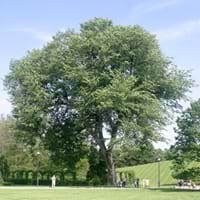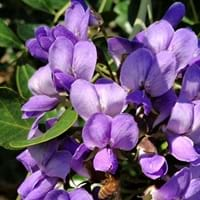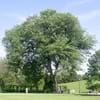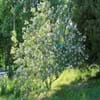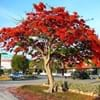Life Span
Perennial
Perennial
Origin
South-Central United States, Texas, Mexico
Southwestern United States, Texas
Types
Cedars
Not Available
Habitat
River side, Woodlands
Arid Habitats, riparian zones
USDA Hardiness Zone
7-9
11-15
Sunset Zone
Not Available
8, 9, 10, 11, 12, 13, 14, 15, 16, 18, 19, 20, 21, 22, 23, 24
Habit
Oval or Rounded
Upright/Erect
Flower Color
White, Ivory
Purple, Blue Violet
Flower Color Modifier
Bicolor
Bicolor
Fruit Color
Red, Light Green, Tan
Brown
Leaf Color in Spring
Green, Yellow green
Dark Green
Leaf Color in Summer
Green, Dark Green
Dark Green
Leaf Color in Fall
Yellow, Green, Yellow green
Dark Green
Leaf Color in Winter
Not Available
Dark Green
Leaf Shape
Elliptic, toothed
Pinnate
Plant Season
Spring, Summer, Fall
Spring
Sunlight
Full Sun, Partial Sun
Full Sun
Growth Rate
Medium
Medium
Type of Soil
Clay, Loam, Sand
Clay, Loam, Sand
The pH of Soil
Acidic, Neutral, Alkaline
Acidic, Neutral, Alkaline
Soil Drainage
Well drained
Well drained
Bloom Time
Late Summer, Early Fall
Early Spring, Spring, Late Winter
Tolerances
Pollution, Drought
Drought, Salt, Soil Compaction
Where to Plant?
Ground
Ground
How to Plant?
Seedlings, Stem Planting
Seedlings
Plant Maintenance
Medium
Medium
Watering Requirements
Keep the ground moist but not water-logged, Requires a lot of watering, Requires watering in the growing season, Water Deeply
Drought Tolerant
In Summer
Lots of watering
Lots of watering
In Spring
Moderate
Moderate
In Winter
Average Water
Average Water
Soil pH
Acidic, Neutral, Alkaline
Acidic, Neutral, Alkaline
Soil Type
Clay, Loam, Sand
Clay, Loam, Sand
Soil Drainage Capacity
Well drained
Well drained
Sun Exposure
Full Sun, Partial Sun
Full Sun
Pruning
Prune to stimulate growth, Remove damaged leaves, Remove dead branches, Remove dead leaves, Remove hanging branches
Remove damaged leaves, Remove dead branches, Remove dead leaves
Fertilizers
All-Purpose Liquid Fertilizer, fertilize in growing season, Nitrogen
All-Purpose Liquid Fertilizer
Pests and Diseases
Bacteria wilt, Beetles, Red blotch
Red blotch
Plant Tolerance
Salt, Shade areas
Drought
Flowers
Insignificant
Showy
Flower Petal Number
Single
Single
Foliage Texture
Fine
Medium
Foliage Sheen
Glossy
Glossy
Attracts
Butterflies
Butterflies
Allergy
Skin rash
Poisonous
Aesthetic Uses
Landscape Designing
Beautification
Beauty Benefits
Not Available
Not Available
Environmental Uses
Air purification, Amazing growth rate, Erosion control, Food for birds, Food for insects, Nesting sites for birds, Prevent Soil Erosion
Air purification
Medicinal Uses
No Medicinal Use
Not Available
Part of Plant Used
Stem, Tree trunks
Flowers, Seeds, Wood
Other Uses
Used as firewood, Used for woodware, Used in construction
Used as Ornamental plant
Used As Indoor Plant
No
No
Used As Outdoor Plant
Yes
Yes
Garden Design
Feature Plant, Shade Trees, Street Trees, Topiary / Bonsai / Espalier
Feature Plant, Shade Trees
Botanical Name
ULMUS crassifolia
SOPHORA secundiflora
Common Name
Cedar Elm
Texas Mountain Laurel
In Hindi
देवदार एल्म
Texas Mountain Laurel
In German
Cedar Elm
Meskalbohne
In French
Cedar Elm
Calia secundiflora
In Spanish
Cedar Elm
Texas Mountain Laurel
In Greek
Cedar Elm
Texas Mountain Laurel
In Portuguese
Cedar Elm
Texas Mountain Laurel
In Polish
Cedar Elm
Texas Mountain Laurel
In Latin
Ulmus Cedar
Texas Mountain Laurel
Phylum
Magnoliophyta
Magnoliophyta
Class
Magnoliopsida
Magnoliopsida
Clade
Angiosperms, Eudicots, Rosids
Angiosperms, Eudicots, Rosids
Tribe
Not Available
Not Available
Subfamily
Not Available
Faboideae
Number of Species
Not Available
Difference Between Cedar Elm and Texas Mountain Laurel
If you are confused whether Cedar Elm or Texas Mountain Laurel are same, here are some features about those plants to help you choose better. Many people think that these two plants have the same characteristics, but one can see Cedar Elm and Texas Mountain Laurel Information and learn more about it. Fertilizers required for proper growth of Cedar Elm are All-Purpose Liquid Fertilizer, fertilize in growing season and Nitrogen, whereas for Texas Mountain Laurel fertilizers required are All-Purpose Liquid Fertilizer. Hence, one should know the basic difference between Cedar Elm and Texas Mountain Laurel if you are planning to have them in your garden to enhance its beauty.
<
Flowering PlantsImportance of Cedar Elm and Texas Mountain Laurel
Want to have the most appropriate plant for your garden? You might want to know the importance of Cedar Elm and Texas Mountain Laurel. Basically, these two plants vary in many aspects. Compare Cedar Elm and Texas Mountain Laurel as they differ in many characteristics such as their life, care, benefits, facts, etc. Every gardener must at least have the slightest clue about the plants he wants to plant in his garden. Compare their benefits, which differ in many ways like facts and uses. The medicinal use of Cedar Elm is No Medicinal Use whereas of Texas Mountain Laurel is Not Available. Cedar Elm has beauty benefits as follows: Not Available while Texas Mountain Laurel has beauty benefits as follows: Not Available.
Compare Facts of Cedar Elm vs Texas Mountain Laurel
How to choose the best garden plant for your garden depending upon its facts? Here garden plant comparison will help you to solve this query. Compare the facts of Cedar Elm vs Texas Mountain Laurel and know which one to choose. As garden plants have benefits and other uses, allergy is also a major drawback of plants for some people. Allergic reactions of Cedar Elm are Skin rash whereas of Texas Mountain Laurel have Poisonous respectively. Having a fruit bearing plant in your garden can be a plus point of your garden. Cedar Elm has no showy fruits and Texas Mountain Laurel has showy fruits. Also Cedar Elm is not flowering and Texas Mountain Laurel is not flowering . You can compare Cedar Elm and Texas Mountain Laurel facts and facts of other plants too.
